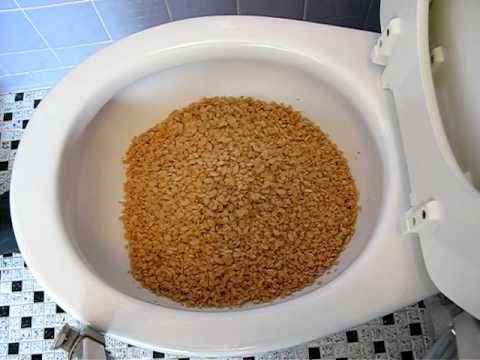Can You to Flush Food in the Toilet?
Can You to Flush Food in the Toilet?
Blog Article
Do you find yourself searching for ideas involving Is it safe to flush food (especially rice) down the toilet??

Intro
Many people are commonly confronted with the dilemma of what to do with food waste, especially when it involves leftovers or scraps. One typical inquiry that develops is whether it's fine to flush food down the commode. In this short article, we'll delve into the reasons individuals may take into consideration flushing food, the repercussions of doing so, and alternative methods for correct disposal.
Reasons why people may consider flushing food
Absence of recognition
Some people might not know the possible harm caused by flushing food down the bathroom. They might mistakenly believe that it's a safe method.
Benefit
Purging food down the bathroom may appear like a quick and easy remedy to throwing away unwanted scraps, especially when there's no nearby trash bin readily available.
Negligence
In many cases, individuals may merely select to flush food out of large laziness, without taking into consideration the consequences of their activities.
Repercussions of flushing food down the toilet
Ecological influence
Food waste that winds up in waterways can add to contamination and harm marine ecological communities. Furthermore, the water made use of to flush food can strain water sources.
Plumbing issues
Purging food can lead to blocked pipelines and drains pipes, causing pricey plumbing repairs and aggravations.
Types of food that ought to not be purged
Fibrous foods
Foods with fibrous appearances such as celery or corn husks can get tangled in pipelines and create clogs.
Starchy foods
Starchy foods like pasta and rice can absorb water and swell, causing blockages in pipes.
Oils and fats
Greasy foods like bacon or cooking oils need to never ever be purged down the bathroom as they can solidify and cause blockages.
Proper disposal approaches for food waste
Making use of a garbage disposal
For homes equipped with waste disposal unit, food scraps can be ground up and flushed through the pipes system. Nevertheless, not all foods are suitable for disposal in this way.
Recycling
Certain food product packaging materials can be reused, decreasing waste and decreasing ecological influence.
Composting
Composting is a green way to throw away food waste. Organic materials can be composted and used to enhance dirt for gardening.
The value of appropriate waste management
Lowering ecological injury
Correct waste management practices, such as composting and recycling, help lessen air pollution and maintain natural deposits for future generations.
Shielding plumbing systems
By staying clear of the technique of flushing food down the bathroom, house owners can avoid expensive plumbing repair services and keep the stability of their pipes systems.
Verdict
To conclude, while it may be tempting to flush food down the commode for convenience, it is essential to recognize the potential repercussions of this activity. By adopting correct waste monitoring practices and throwing away food waste properly, individuals can contribute to healthier plumbing systems and a cleaner atmosphere for all.
FLUSH FOOD DOWN THE TOILET?
FLUSHING FOOD CAN CAUSE BLOCKED DRAINS IN YOUR HOME
All of the plumbing fixtures in your home are connected to the same sewer pipe outside of your home. This outdoor sewer pipe is responsible for transporting all the wastewater from your home to the Council sewer mains. Even small pieces of food that go down the kitchen sink can cause problems for your sewer. It should therefore be obvious that flushing larger bits of food, such as meat, risks a clog in either the toilet itself or the sewer pipes. Flushing greasy food is even more problematic because oil coagulates when it cools, coating the interior lining of your pipes.
THE TOILET IS NOT A BIN
Food isn’t the only thing that people shouldn’t be flushing down the toilet. People use the toilet to dispose of all kinds of things such as tampons, makeup wipes, dental floss, kitty litter and even underwear. Water goes to great lengths to educate residents about the high costs and stress placed on wastewater treatment systems simply from people flushing the wrong stuff down the toilet. It costs taxpayers millions of dollars each year, and homeowners thousands in blocked drain repairs.
FLUSHING FOOD IS A WASTE OF WATER
Flushing food is a waste of our most precious resource - water. In June this year Level 1 water restrictions were introduced to protect water supply from drought conditions. Much of New South Wales continues to be affected by prolonged drought with recent figures revealing up to 97 per cent of the state remains in drought. Depending on whether you have a single or dual flush toilet, every single flush uses between five and 11 litres of water. In the current climate this is a huge amount of water to be wasting on flushing food that should be placed in the bin (or better yet, the compost).
https://www.jabplumbingsolutions.com.au/blog/can-you-flush-food-down-the-toilet

Do you appreciate more info about What Can Happen If You Flush Food Down the Toilet?? Give feedback further down. We'd be delighted to see your opinions about this blog posting. In hopes that you visit us again soon. Are you aware of another individual who is involved in the subject? Feel free to promote it. Many thanks for being here. Revisit us soon.
Set An Appointment Report this page